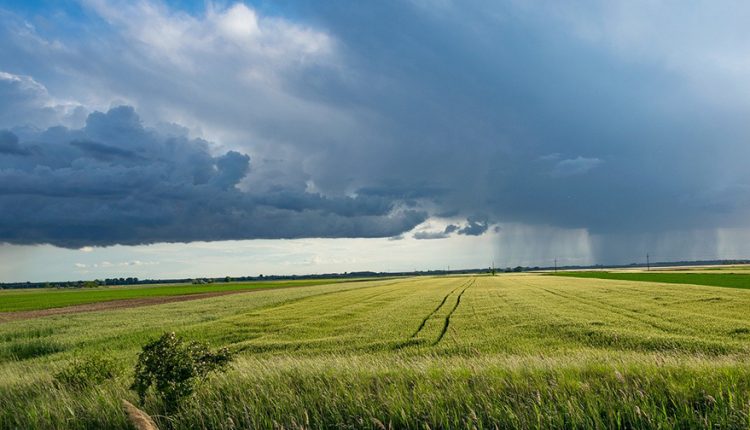Robotics and artificial intelligence (AI) will drive a deep and transformative change in the agricultural world during the coming decades. Seeing, localising, and taking plant-specific intelligent action are no longer the exclusive realm of humans.
Machines have demonstrated the technical viability and the emphasis has long shifted to the finer details of ROI, reliability, business model, etc. As such, a new class of activities in agriculture are prone to automation, just as advances in power and motion technologies mechanized many agricultural tasks, or just as advances in seed and agrochemical technology removed the human from many activities.
The IDTechEx assessment is that the upcoming changes are already a question of when and not if. The transformation will not be overnight, but nonetheless, robotics and AI are inevitability in the evolution of agricultural tools and practises. The scale of the potential is demonstrated in the chart below, which shows the forecasted long-term growth in annual unit sales (vs accumulated fleet size) of various autonomous and/or robotic solutions.
In this article, IDTechEx Research provides an overview of the key product categories and discusses underlying technologies which are driving this change. For each, we offer our insights about the current and future technical and adoption status.
IDTechEx Research has been examining the technologies, applications, products, and players active in agricultural robotics and AI for the past five years. The article is based on the IDTechEx report ‘Agricultural Robots, Drones, and AI: 2020-2040: Technologies, Markets, and Players’, which covers the latest developments and reflects our latest insights, analysis, and market projections.
Indeed, this report analyses all the emerging product types, including autonomous robots taking plant-specific precision action, intelligent vision-enabled robotic implements, diverse robotic fresh fruit harvesters, highly automated and autonomous tractors and high-power farm vehicles, drones, automatic milking, and so on. It provides interview-based company profiles and analysis of all of the key companies and innovators.
Finally, the report offers short- and long-term market forecasts, considering the addressable market size in area or tons and value, penetration rates, annual robot sales, accumulated fleet size, total RaaS (robot as a service) revenue projections and so on. The forecasts cover 15 robot types and farming sectors.
Agricultural Robots: A Cost-Effective Precision Revolution?
Examples of these products or robots are shown below. These are often small or mid-sized robots which are designed to autonomously navigate and to automatically take some precise plant-specific action.
Machine vision technology is often a core competency of these robots, enabling the robots to see, identify, localise, and to take some intelligent site-specific action on individual plants. The machine vision increasingly uses deep learning algorithms often trained on expert-annotated image datasets, allowing the technology to far exceed the performance of conventional algorithms and to match or even exceed even that of expert agronomists. Crucially, this approach enables a long-term technology roadmap, which can be extended to recognize all types of crops and to analyse their associated conditions, e.g., water-stress, disease, etc.
Many versions of this emerging robotic class are autonomous. The autonomy challenge is much simpler than a car. The environment is well controlled and predictable, and the speed of travel is low. The legislation is today a hinderance, including in places such as California, but will become more accommodative relatively soon.
The rise of autonomous robots, provided they require little remote supervision, can alter the economics of machine design, enabling the rise of smaller and slower machines. Indeed, this elimination of the driver overhead per vehicle is the basis of the swarm concept. There is clearly a large productivity gap today between current large and high-power vehicles and those composed of fleets of slow small robots. This productivity gap however can narrow as the latter has substantial room for improvement.
The first major target market is in weeding. The ROI benefits here are driven by labour savings, chemical savings, boosted yields, and less land compaction. Precision action (spraying, mechanical, or electrical) reduces consumption of agrochemicals by 90% compared to untargeted application. It also improves yield (e.g., by 5-10%) because collateral damage of the crops by untargeted chemical application can be minimized. This technology can further enable farmers to tackle herbicide-resistant weeds, which are a growing problem, especially in some hotspots. Finally, the robots leave behind no unusable compacted soil.
These robots are evolving. Many robots have already grown in size and capability, offering faster speeds, higher frame-per-seconds, more ruggedized designs, higher on-board energy for longer operation time and a heavier load, and so on. This evolution will inevitably continue, just as it did with all other agricultural tools and vehicles. We are still at the beginning. The deployed fleet sizes worldwide are small, but this is about to change (see the chart above).
Intelligent Robotic Implements: The Inevitable Next Generation of Agricultural Tools
Simple robotic implements utilising basic row-following vision technology are already mature and not uncommon in organic farms. Advances in vision technology are transforming tractor-pulled implements though, upgrading them into intelligent computerized tools able to take plant-specific precise action.

